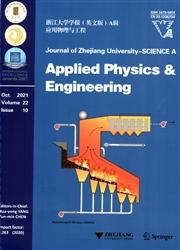黄土小微孔隙分形分析及压汞孔隙法渗透率估算
IF 3.9
3区 工程技术
Q1 ENGINEERING, MULTIDISCIPLINARY
引用次数: 0
摘要
基于压汞孔隙法(MIP),提出了许多研究多孔材料孔隙分形特性的流行模型。然而,这些模型大多不能直接适用于黄土的小微孔隙,而小微孔隙对流体流动的喉孔和隧道有重要影响。因此,在本研究中,我们采用常规体检、MIP分析和扫描电镜(SEM)图像分析相结合的技术来研究这些小微孔隙及其饱和渗透率特性。利用该方法确定了6种MIP分形模型的分形维数能否用于评价黄土的微观结构类型和渗透特性。结果表明,Neimark模型适用于小微孔隙的分析。将该模型应用于饱和渗透率,结果满足相关显著性检验,与SEM分析结果一致。粘土含量和密度高导致小微孔隙数量增加,孔隙结构粗糙度和非均质性增强,分形维数增大。这一过程进一步导致了宏细观孔隙含量和饱和渗透率的降低。此外,我们提出了新的参数:椭圆及其面积比(EAR)。这些参数与2D-SEM和3D-MIP分形维数相结合,可以有效定量地评价黄土微观结构类型(从I型到III型)和饱和渗透率(震级从1×10−4 cm/s到1×10−5 cm/s)。本文章由计算机程序翻译,如有差异,请以英文原文为准。
Fractal analysis of small-micro pores and estimation of permeability of loess using mercury intrusion porosimetry
Many popular models have been proposed to study the fractal properties of the pores of porous materials based on mercury intrusion porosimetry (MIP). However, most of these models do not directly apply to the small-micro pores of loess, which have a significant impact on the throat pores and tunnels for fluid flow. Therefore, in this study we used a combination of techniques, including routine physical examination, MIP analysis, and scanning electron microscope (SEM) image analysis, to study these small-micro pores and their saturated water permeability properties. The techniques were used to determine whether the fractal dimensions of six MIP fractal models could be used to evaluate the microstructure types and permeability properties of loess. The results showed that the Neimark model is suitable for analysis of small-micro pores. When applied to saturated water permeability, the results from this model satisfied the correlation significance test and were consistent with those from SEM analysis. A high clay content and density cause an increase in the number of small-micro pores, leading to more roughness and heterogeneity of the pore structure, and an increase in the fractal dimensions. This process further leads to a decrease in the content of macro-meso pores and saturated water permeability. Furthermore, we propose new parameters: the *Ellipse and its area ratios (*EAR). These parameters, coupled with 2D-SEM and 3D-MIP fractal dimensions, can effectively and quantitatively be used to evaluate the types of loess microstructures (from type I to type III) and the saturated water permeability (magnitude from 1×10−4 cm/s to 1×10−5 cm/s).
求助全文
通过发布文献求助,成功后即可免费获取论文全文。
去求助
来源期刊

Journal of Zhejiang University-SCIENCE A
工程技术-工程:综合
CiteScore
5.60
自引率
12.50%
发文量
2964
审稿时长
2.9 months
期刊介绍:
Journal of Zhejiang University SCIENCE A covers research in Applied Physics, Mechanical and Civil Engineering, Environmental Science and Energy, Materials Science and Chemical Engineering, etc.
 求助内容:
求助内容: 应助结果提醒方式:
应助结果提醒方式:


